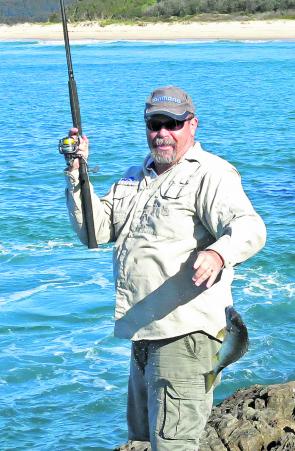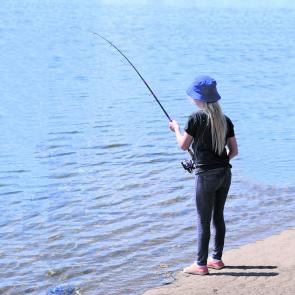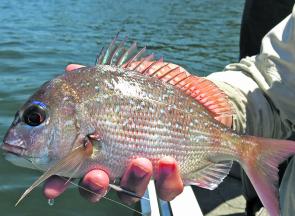In nine out of 10 cases, according to Starlo, the simplest terminal rig suited to the fishing task at hand is also the best choice for the job.
I’m sure most readers will have heard of the so-called ‘KISS’ principle. Depending on who you listen to, this popular acronym stands for either “keep it simple, stupid!” or “keep it short and simple”. Either way, it’s an idea commonly applied to all sorts of disciplines, from accountancy, medicine and marketing to various sports… including recreational fishing.
Along with KISS and the associated idea that ‘less is more’, I’m also a big fan of another time-proven principle known as Occam’s Razor, which can be distilled down to an eight word statement: “the simplest answer is usually the right one”. Successful police investigators employ this deceptively straightforward approach to narrowing down their lists of suspects for a crime, and smart doctors also apply it to the diagnosis and treatment of diseases and injuries.
Although they’ve been widely popularised in modern times, these minimalist concepts are by no means new. In fact, renowned Italian artist and engineer, Leonardo da Vinci, summed them up beautifully more five centuries ago when he stated: “simplicity is the ultimate sophistication”.
I’m a firm believer that the ideas embodied in the KISS principle, Occam’s Razor and the belief that “less is more” all have a great merit when applied to angling, particularly in terms of how we choose, rig and use our fishing tackle.
I can’t believe how complicated some of the rigs I see illustrated or described in fishing books and magazines are. In a few isolated instances there may be good reasons for using more complex arrangements of terminal tackle when constructing a rig. However, it’s my firm belief — one born out by a lifetime of fishing experience and observation — that in at least nine out of 10 instances, the simplest rig for the job at hand is also the best one by far!
Look at it this way: Every extra knot you add to a rig introduces one more potential failure point into the tenuous, fragile chain between you and the fish. Every additional item of terminal tackle you include increases the cost and time involved in constructing the rig… And every shiny doo-dad or nifty gizmo hanging in front of your bait, lure or fly is one more thing that’s likely to spook, alarm or distract a fish, potentially preventing it from taking your offering.
In a surprising amount of instances, a bait hook, lure or fly tied directly to the end of your line or leader is all you really need to catch a fish. If a sinker is required (especially for bait fishing), try simply threading one onto the line so it can run freely all the way down to the hook. If you really believe you need to keep that sinker away from the bait for some reason, add a swivel to the rig 30 or 40 cm from the hook and run the sinker on the line above this instead.
Those three rig variations — no sinker, running sinker right to the hook or running sinker above a swivel — should easily cover 95 per cent or more of your bait fishing needs. Sure, if you’re using a sidecast reel, you can always add another small swivel a metre or so up the line, above any other item of terminal tackle, to prevent twist. But that’s about it. You don’t need anything else! Whatever you do, don’t over-complicate things just for the sake of doing so, or because you’ve admired some snazzy, convoluted set-up illustrated in a book or magazine.
We’ll return to the subject of rigging many times in future instalments of this column, but for now, I want to leave you with a marvellous quote from the early 20th century French aristocrat and aviator, Antione de Saint-Exupery, who sagely said: “It seems that perfection is reached not when there is nothing left to add, but when there is nothing left to take away.” Think about it…
Reads: 3005
A black drummer or “pig” taken from the rocks on a deadly simple running sinker rig. Need a bit more weight? Add a second sinker!

Swinging up a keeper bream caught on a straightforward bait fishing rig consisting of a small sinker running all the way down to a hook. That’s all you need in so many situations.

Kids, in particular, really benefit from the use of simple rigging strategies.

What could be simpler than a hook tied directly to the end of your line?




